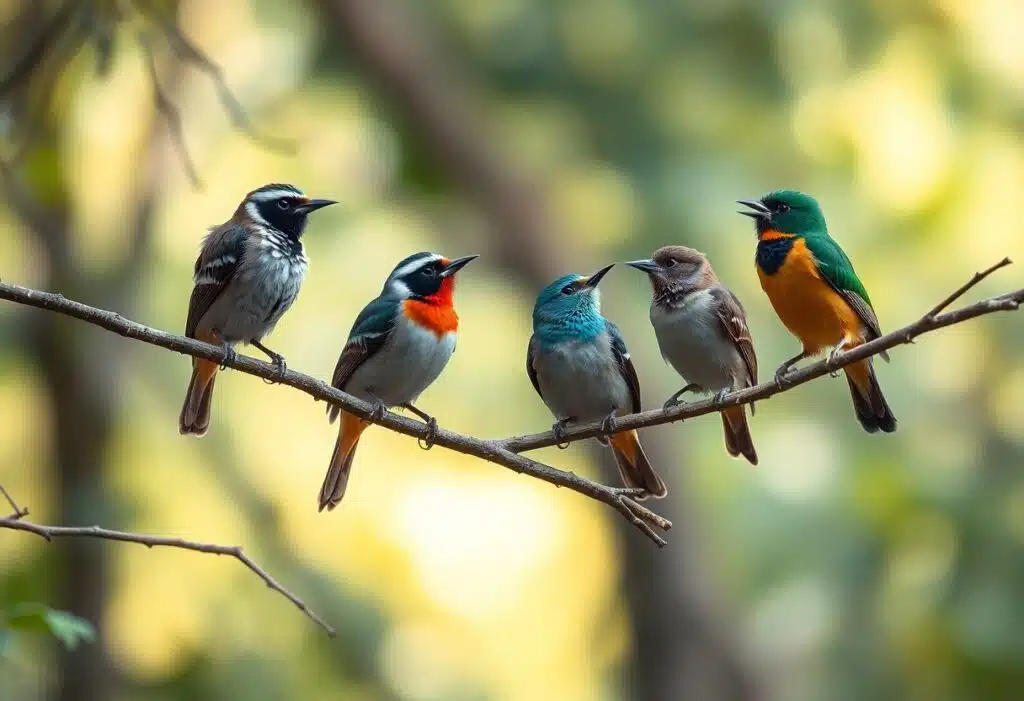Can Birds Communicate with Each Other?
Communication is imperative in the bird world. Did you know that birds use a wide range of methods to send messages to each other? From direct calls to their vibrant body language, birds communicate about various things like finding food, alerting each other of predators, and even attracting a mate. As you watch birds in your backyard or a nearby park, you’ll start to understand the intricacies of bird communication and how they work together to survive in their environment.
Key Takeaways:
- Birds use various ways to communicate. They make bird sounds, like songs and calls, to send different messages. For example, alarm calls can warn others of a predator, while songs help attract a mate.
- Body language matters! Birds also use their body posture and colors to share information. A bird might fluff its feathers or bob its head to show it’s strong and ready to defend its territory.
- Learning is key for young birds. Baby birds often learn to communicate by mimicking adult birds. They pick up different calls and sounds to help them stay in touch with their flock and communicate with mates.
> “By studying bird communication, we can gain a deeper understanding of how birds interact, find food, and survive in the wild.” In the world of bird communication, it’s fascinating to see how these creatures convey important messages to each other, whether through sounds, colors, or actions.
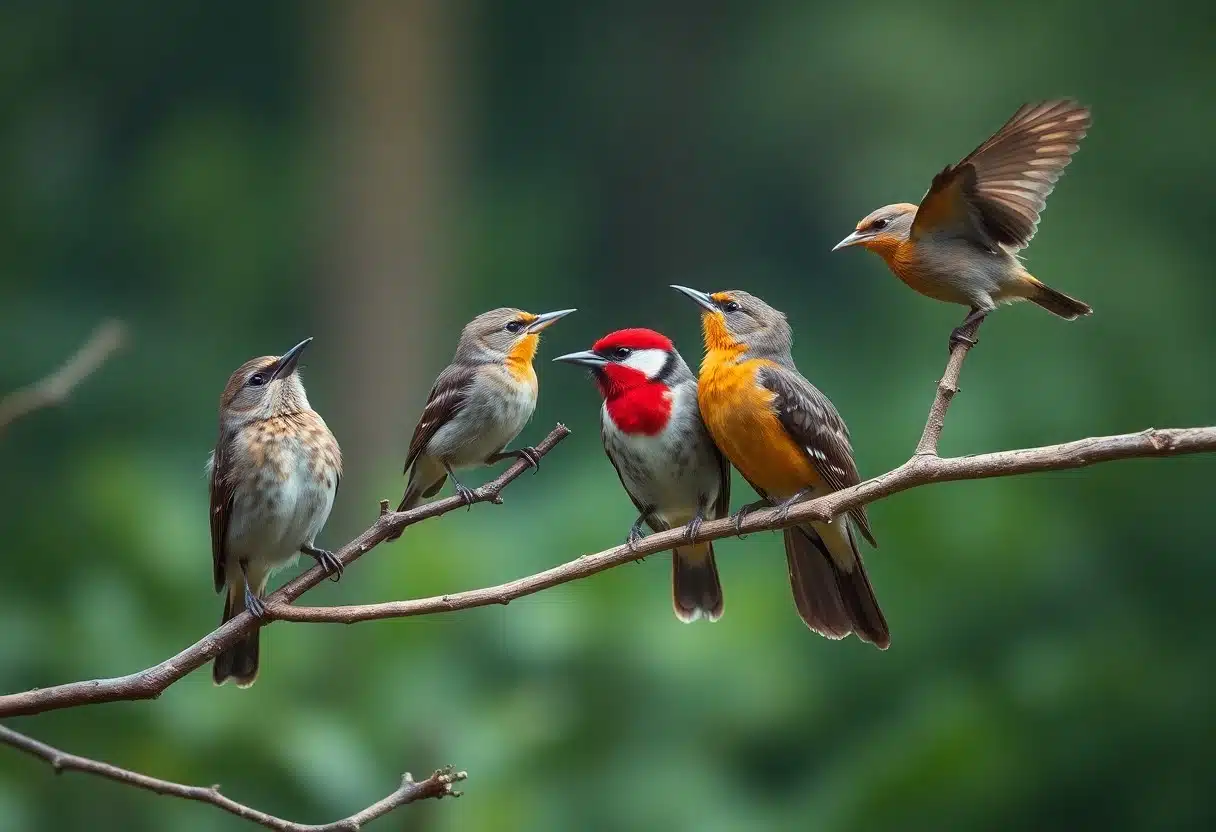
Understanding Bird Communication
To truly appreciate the world of bird communication, you need to look beyond the mimicry of pet birds. Birds use various methods to communicate, including songs, calls, and body language. Each bird species has its own way of sending messages, whether it’s through a loud alarm call to warn of a predator or a sweet song to attract a mate. Observing the intricacies of how birds interact helps you better understand their social behaviors and survival strategies.
The Significance of Studying Bird Communication
One of the main reasons to study bird communication is to enhance your understanding of the ecosystems they inhabit. By learning how different bird species use various sounds and signals, you can gain insights into their behaviors, such as how they find food or defend their territories. This knowledge contributes to our overall understanding of wildlife and the importance of birds in nature.
Defining Bird Communication
Assuming you want to dive deeper into this fascinating topic, it’s important to define what bird communication entails. Birds communicate through a variety of means—sometimes using their voices, other times relying on body language or visual displays. They send messages related to feeding, mating, and territory defense. For example, alarm calls can help alert nearby birds to an intruder, and brightly colored plumage may signal a male bird’s health and strength to potential mates.
Bird communication involves numerous signals that can be complex. Each bird species has its own unique calls and songs that serve different purposes. Taking the time to observe how birds interact not only helps you learn the art of bird behavior but also allows you to understand how they work together in their communities. For instance, when a bird squawks a distress call, it warns others of danger, while vocalizations can help chicks stay in touch with their parents. By examining these types of communication, you start to unravel the mysteries of how birds express themselves in the wild.
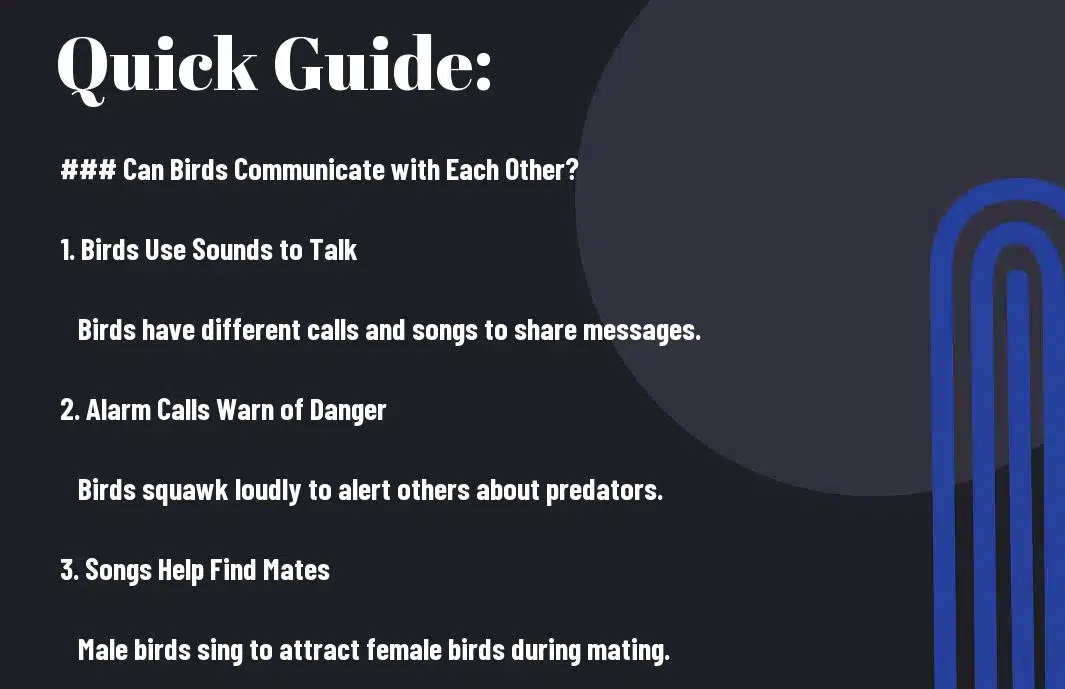
Types of Communication
If you’re curious about how birds interact, there are different types of communication they use:
- Vocal Communication: Birds use songs and calls to convey different messages.
- Visual Communication: Birds use their appearance and body language.
- Chemical and Tactile Communication: Birds may use scents or touch.
This variety allows birds to communicate about food, territory, and mates effectively.
| Type | Description |
| Vocal | Involves songs and calls to convey different messages. |
| Visual | Uses plumage and body language to communicate. |
| Chemical | Involves scents to convey messages. |
| Tactile | Involves touch, like allopreening between pairs. |
| Body Language | Posture and movements to express intentions. |
Vocal Communication
The way birds talk to each other is fascinating. They use a mix of songs and calls. Songs help attract mates and mark territory, while calls are used for staying in touch with flock mates. Each type of vocalization has a specific purpose that helps birds communicate effectively.
Visual Communication
If you watch birds closely, you’ll see them using their appearance and body language to share information. Bright colors and special movements can send strong messages.
A peacock is a perfect example of visual communication. During mating season, male peacocks display their stunning feathers to attract females, showcasing their vitality. You can also observe how birds like the red-winged blackbird use their body posture to defend their territory. By fluffing their feathers and raising their wings, they make themselves look larger and more impressive. This is an important part of how birds communicate, keeping rival birds at bay and ensuring their nesting area is safe.
Chemical and Tactile Communication
You might be surprised to learn that birds also use scents and touches for communication. Some birds can release specific scents that help mates recognize each other or mark their territories.
Another interesting aspect is tactile communication. Birds engage in behaviors like allopreening, where they groom each other. This not only keeps their feathers neat but also strengthens bonds between mates. These actions enhance their connection, making it easier to stay safe from predators and raise healthy chicks together.
Tips for Decoding Bird Communication
After observing the intricacies of bird communication, you can better understand how they send messages to each other. Here are some tips to help you decode their chatter:
- Listen for different calls and songs used to communicate various messages.
- Watch for bird body language and visual displays.
- Take note of the context in which birds are communicating.
- Learn to recognize specific vocalizations of nearby birds.
Perceiving these signs will enhance your appreciation of the world of bird communication.
Learning to Recognize Different Vocalizations
For beginners, distinguishing between different bird sounds can be fun and informative. Start by listening for alarm calls that signal danger, like the loud squawking of a red-winged blackbird. As you become familiar with these sounds, you’ll be able to understand what the birds are saying to each other in your backyard or local park.
Understanding the Role of Plumage and Coloring
Clearly, the plumage of birds plays a significant role in their communication. Bright colors and elaborate feather patterns can attract mates during the breeding season or help ward off rival birds. For instance, male peacocks proudly display their colorful tails to impress potential partners. Observing these visual cues can give you deeper insights into bird behavior.
Learning about how different species of birds use their plumage can reveal amazing facts about their behavior. Birds often display their vibrant colors to show strength and health, which can greatly affect their chances of attracting a mate. In many cases, these displays serve a dual purpose: showcasing attractiveness while also deterring predators and rival birds. By watching these behaviors, you will gain an understanding of how birds communicate their intentions clearly and effectively. Properly appreciating these messages can provide safety for your feathery friends and help you become a better observer of nature.
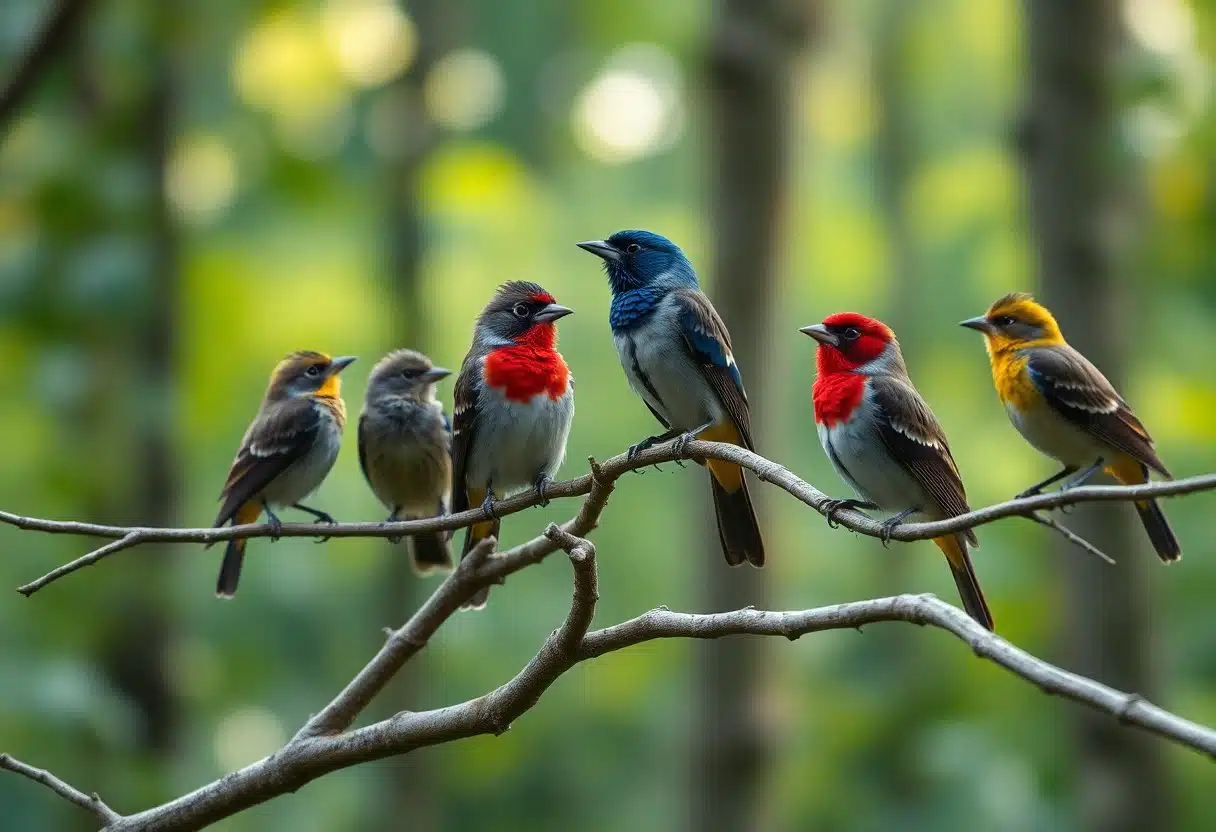
Step-by-Step Guide to Bird Communication
All birds communicate using various methods. To help you understand, here’s a simple breakdown:
| Method | Description |
| Vocalization | Birds use songs and calls to communicate different messages, such as alarm calls to warn others of a predator. |
| Body Language | Postures and movements convey messages during territory defense or mating rituals. |
| Coloration | Bright plumage is used to attract mates and show dominance. |
How Birds Learn to Sing and Make Calls
With many different bird species around, learning to communicate varies widely. Some birds are born knowing basic sounds, while others watch and mimic the songs of their parents and nearby adult birds.
The Importance of Context in Bird Communication
Now, understanding bird communication means considering the context in which sounds are made. Birds use vocalizations and body language to share information about food sources or to stay in touch with their flock mates.
For instance, songs are often used to attract prospective mates and defend territories. Alarm calls serve as warnings for nearby birds about intruders. The message changes depending on the situation—a sweet song might mean love, while a loud squawk can signal danger from a predator. Different species of birds will even have their own unique calls, which helps them communicate effectively in their environment.
Factors Affecting Bird Communication
Unlike humans, birds communicate using a variety of complex signals. Different factors can influence how well birds convey messages, including:
- environment
- social structure
- species differences
This means that understanding the intricacies of bird communication requires looking at these diverse influences.
Environmental Factors
To understand how birds communicate, consider environmental factors that shape their interactions. Elements like:
- habitat type
- weather conditions
- background noise
Assume that these conditions can affect how birds convey messages to each other or even hear each other’s calls.
Social Factors
Factors in a bird’s social structure also play a big role in their communication. These include:
- flock dynamics
- hierarchy among birds
- mate preferences
Knowing these aspects can help you better understand how birds communicate with one another during nesting, feeding, and even defending their territory. Bird behavior often changes when it involves different social situations.
The social factors that affect bird communication are intricate. For example, male birds often use vocalizations to attract prospective mates while also warning off rivals. The calls used by birds like the red-winged blackbird can signal a territory claim or share information about nearby food sources. This layering of social interactions means that you can observe many species using a variety of bird sounds to navigate their world. Knowing these social cues can enhance your enjoyment of bird watching.
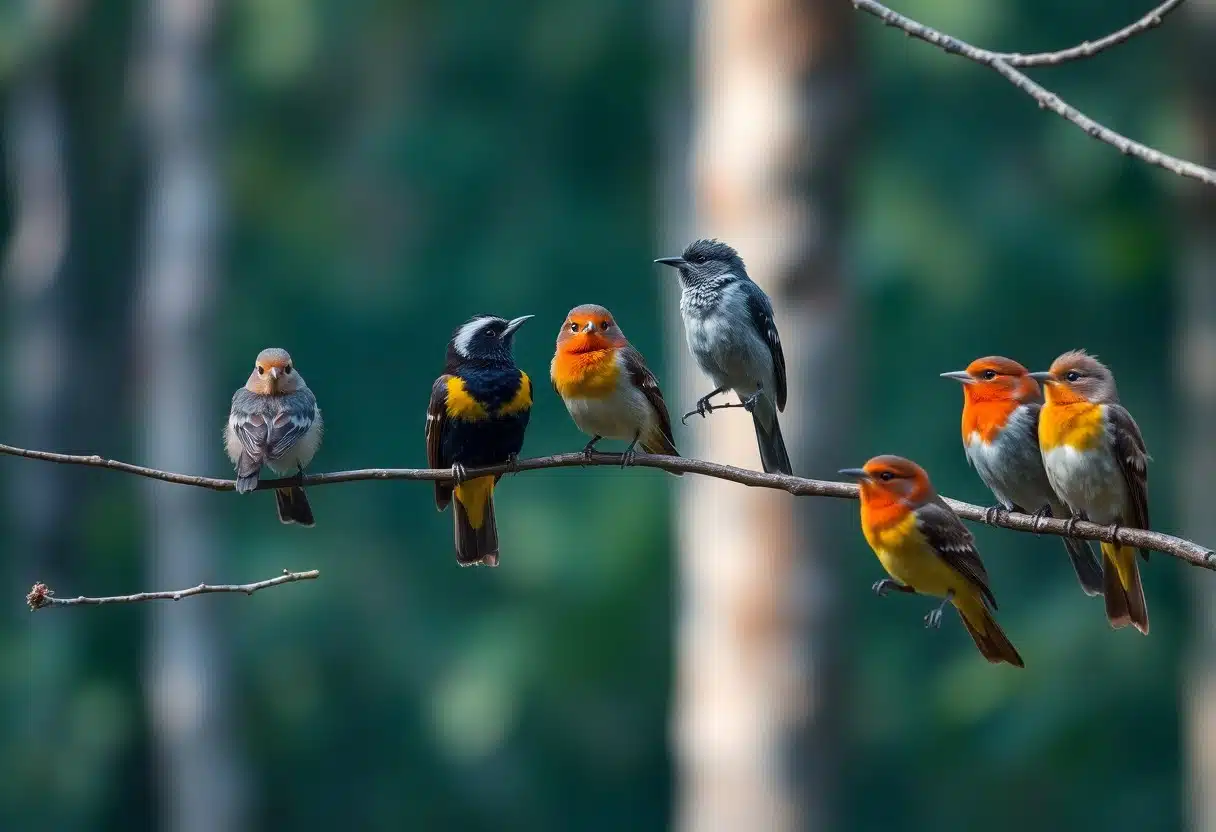
Pros and Cons of Bird Communication
Once again, understanding bird communication can reveal both benefits and challenges. From helping birds find food to defending territories, there are many aspects to consider. Let’s break it down in the table below.
| Pros | Cons |
|---|---|
| Helps birds locate food sources | Can attract predators |
| Allows for strong mate selection | Misinterpretation of messages |
| Facilitates protection of young | Increased competition among species |
| Promotes flock cohesion | Limits individual independence |
| Establishes territory boundaries | Excessive vocalization can draw attention |
The Benefits of Effective Communication
With effective communication, you will see birds staying in touch with flock mates, warning others of predators, and sharing information about food sources. This helps every bird find food and avoid dangers, ensuring their survival and success. Using different calls and songs to communicate different messages allows various bird species to thrive together, enriching their habitats.
The Drawbacks of Ineffective Communication
An ineffective communication system can lead to confusion among birds. If they cannot clearly convey messages, they might miss danger signals, which could lead to getting caught by predators. Misunderstandings can also impact mating behaviors and lead to ineffective territory defense.
Another downside is that if a bird misinterprets another’s call, its chance of survival could decrease dramatically. For example, an alarm call that is misunderstood may inspire a bird to flee in the wrong direction, right into the path of a predator. The intricacies of bird communication are vital for their daily lives. A group of birds may also end up competing for the same food source if they fail to communicate effectively. Understanding bird behavior can be the difference between safety and danger in the avian world.
To wrap up
So, if you’re curious about how birds communicate with each other, you’ll be amazed at their skills! Birds use songs and calls to share different messages, warn their friends of predators, and even find food. Whether it’s a loud squawk or a sweet tweet, each sound has a purpose. Understanding bird communication, like their body language and vocalizations, will help you appreciate the intricacies of this fascinating world. If you want to dive deeper into this topic, check out Bird Communication: An Introduction for more!
FAQ
Q: Can birds communicate with each other?
A: Yes, birds can communicate in many ways, like singing songs, making calls, and using body language to share important messages with nearby birds.
Q: What types of messages do birds send to one another?
A: Birds use different calls and songs to communicate about things like finding food, attracting a mate, or warning of predators. For example, alarm calls can alert others about dangerous intruders.
Q: How do baby birds learn to communicate?
A: Baby birds learn to communicate by watching their parents and mimicking the sounds they hear. They start with simple sounds and work up to complex calls as they grow.
As a bird enthusiast with a passion for sharing the wonders of our feathered friends. As a writer and nature lover, I'm thrilled to connect with fellow bird buffs and inspire others to take flight into the fascinating world of birds. Let's wing it together!

